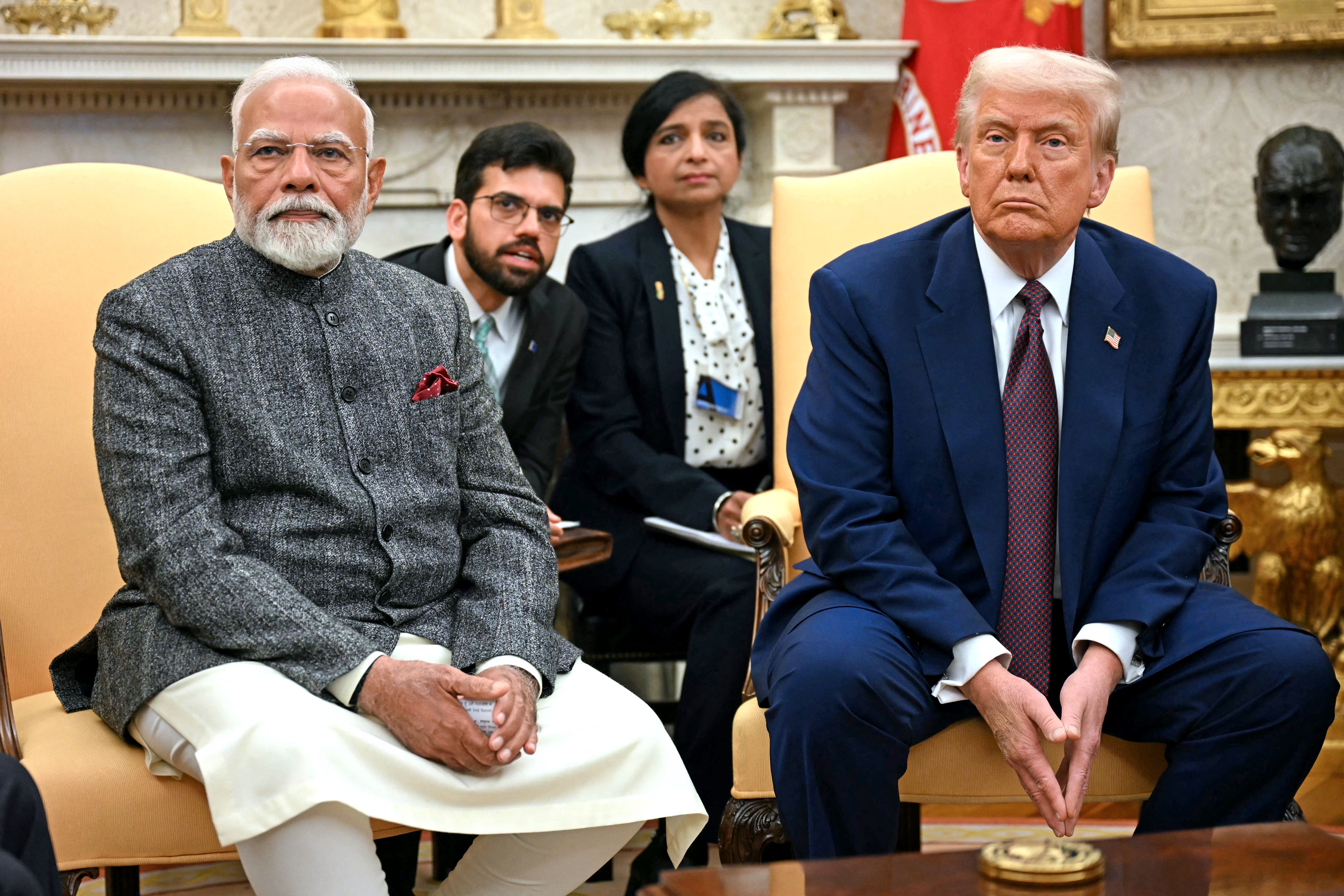The Truth About the Indo-American Relationship
There’s unlikely to be any long term damage, but in the short term, things don’t look very nice.

Within a span of 15 minutes on Wednesday, President Trump declared a 25 percent tariff on the United States’ “friend” India, and NASA and ISRO launched a radar system into space in the first joint Indo-American space operation in history.
This perfectly defined the increasingly complex and entwined Indian and American foreign-policy relationship. On one hand, there was social media footage of the hulking GSLV rockets, launched from Southern India, carrying the NISAR satellite, a “first of its kind,” and according to NASA’s Karen St. Germain, “the most sophisticated radar” the U.S. has ever built. “The science of NISAR will advance our understanding of the Earth system with cutting-edge technology capable of studying changes in land and ice — changes as small as a centimeter, in any weather and in both darkness and light,” a press statement said. Within minutes of that, Donald Trump came out with a statement that blamed India for buying Russian oil and imposed a 25 percent flat tariff on Indian products and some unspecified penalty for overreliance on Iranian and Russian trade, energy, and military equipment. Talks are still ongoing, but, needless to say, the reactions from Indian media were not positive.
There is no Trump Doctrine; it is a fool’s errand to justify strategic irrationality. This administration is increasingly running on instincts. Some of them are coherent: Burden-shifting in Europe is one example. The policy execution of these instincts, however, often leaves a lot to be desired. But, even by that standard, this new tariff regime is a bit difficult to understand. Tariffs on India can seem like a strange policy, especially, given the desire to pivot to Asia and balance China. Consider that two pillars of Trumpism are great-power competition with China and manufacturing independence; and since the U.S. lacks the cheap labor, expertise, or industries needed to reshore manufacturing, it defies logic to have tariff wars with India, Japan, South Korea, Mexico, and China all at the same time.
That said, this is a deeper issue, one lurking under sophisticated analysis. India is turning out to be a global problem. And it is in part the Indian government to blame.
The foreign policy of India has been historically consistent and detached from every major power center of the globe. Partly that is due to the history of British imperialism. But even then, India was equidistant during the Cold War. Initially, it received material and military support and hardware from Britain. During the war in 1962 with China, India’s Prime Minister Jawaharlal Nehru reached out to President John F. Kennedy and received some support from the U.S. But then, due to a misguided, Soviet-inspired domestic energy and economic policy, and the British and Americans having high hopes about a strong Pakistan, India drifted towards the Soviet bloc, which was ready to provide diplomatic support during the wars with Pakistan. Post-9/11, the U.S. propped up India as a counterweight to Islamist terrorism from South Asia and increasingly as a hedge against the rise of China.
All that of course, came crashing down with Trump’s outbursts. It is unlikely that India will ever take the U.S. seriously about an alignment against China. But it is also unlikely that India and China can be natural allies. India does play both sides: buying oil from Russia and selling it to Europe, aligning with Iran and Israel simultaneously, running rampant visa scams, and simultaneously being a member of the BRICS, the SCO, and the QUAD. The massively powerful and protectionist Indian agricultural sector and organized labor also have a vise-like grip on Indian policymaking, which is a hindrance to any reform. Sooner or later the bill will come due.
Subscribe Today
Get daily emails in your inbox
Another social issue is that Indians from an earlier era who migrated to the west, are some of the most assimilated in the world. Indian-Americans (and British-Indians) are historically from the upper class, and some of the highest-earning and highest-educated communities abroad, much different from the newer crops of working-class Indians migrating to Canada or New Zealand, for example.
But something has changed in recent years. The post-Modi era of migration to the west has seen working class Indians bring their petty grievances and ethnic chauvinism abroad. They would rather self-cocoon themselves in their own communities, entrenched in curry and Bollywood, and as Andrew Beck wrote recently, erecting garish statues that look more like cultural conquest than immigration with an aim of assimilation. Naturally, that creates a spiral of animosities and accusations of dual loyalties. It becomes difficult to justify pro-India policy to Americans who see their manufacturing jobs moving to India, which, while not a rival similar to China, is also not technically an ally and has no interest in aligning with the U.S. in the biggest geopolitical questions of the world.
The charitable interpretation is that this is all a negotiating tactic, and sooner or later there will be a deal; the president will call the prime minister his new best friend. Nothing really matters anymore. A more reasonable explanation is to use Stacie Goddard’s terminology, that this is all about a “great power collusion,” in which the world is inevitably going to be a G2 between the U.S. and China; the American president is acting unhinged because that is one way to discern who will remain American-aligned and who is just a fair-weather friend trying to hedge. The risk, however, is this: No one likes a revolutionary power like Jacobin France or the USSR, exporting their revolutions abroad and trying to break an order up on either whims or ideology. International relations are sometimes about choosing a side and sticking with it, warts and all. Because, as on any other schoolyard, others might someday gang up on you.